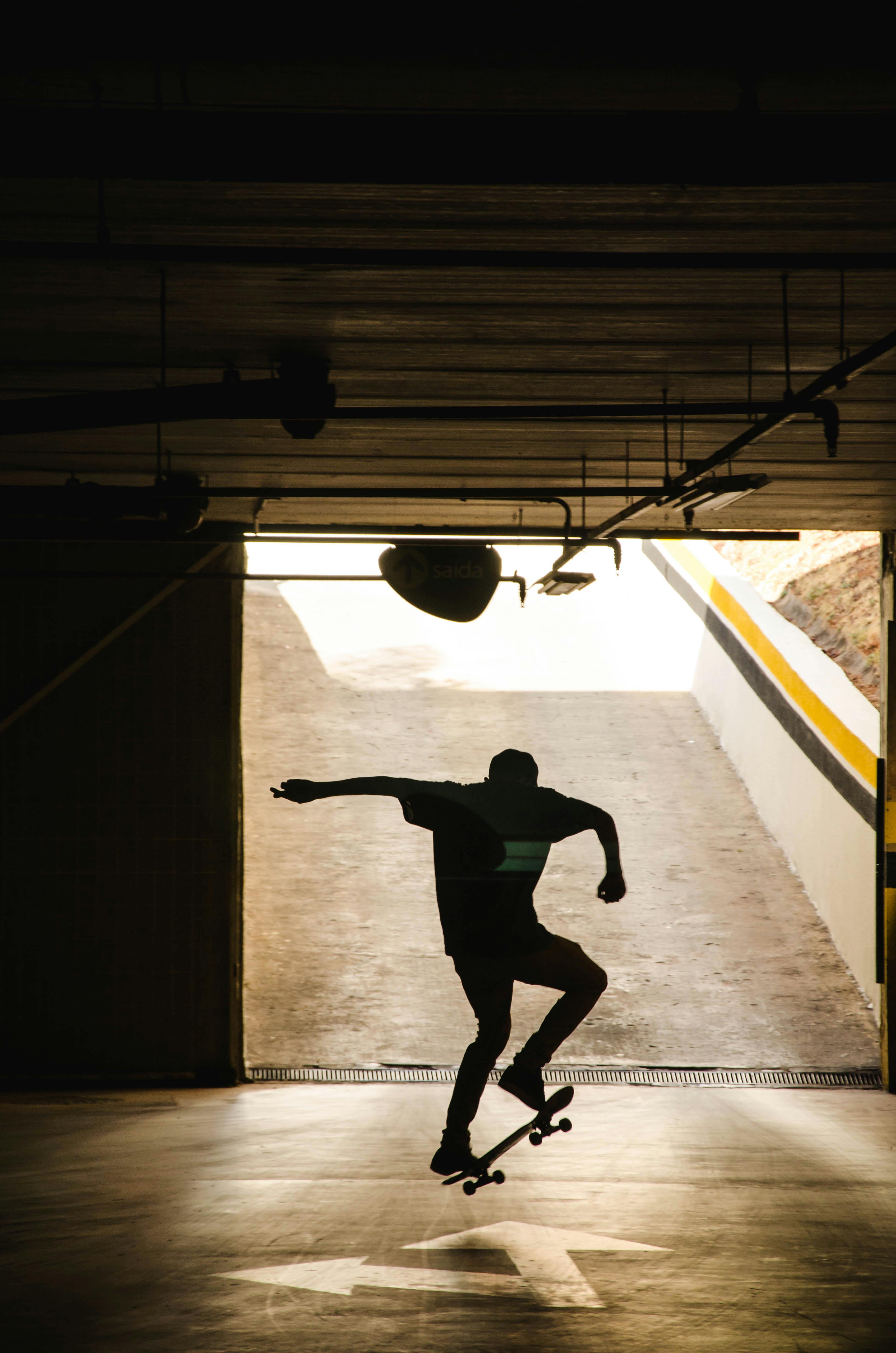Sure, we all know that finding the right skate wax can make all the difference when it comes to gliding smoothly and effortlessly on our boards. So, whether you’re a beginner or a seasoned skater, this article is here to help you out. We’ll not only give you a breakdown of some top-notch skate wax brands in the market but also share some valuable tips on how to use wax effectively to enhance your skateboarding experience. So, get ready to step up your skate game with the perfect combination of grip and slide!
Choosing the Right Skate Wax Brand
Skate wax is an essential accessory for any avid skateboarder. It not only helps you achieve smoother and more controlled slides but also protects your skateboard from unnecessary wear and tear. However, with so many skate wax brands available on the market, it can be overwhelming to choose the right one for your needs. In this article, we will explore the composition of skate wax, the different types available, and popular brands that you can trust for optimal performance.
Composition of Skate Wax
Skate wax is typically made from a combination of paraffin and other premium ingredients to provide a smooth gliding experience. The paraffin used in skate wax is derived from petroleum, making it an ideal material for reducing friction on various skate surfaces. Some brands may also incorporate additives like beeswax or soy wax to enhance the durability and grip of the wax.
When choosing a skate wax brand, it’s important to consider the composition of the wax. Look for brands that prioritize high-quality ingredients to ensure the longevity and effectiveness of the product.
Types of Skate Wax
Skate wax comes in various shapes and forms, each catering to different skateboarding styles and surfaces. The most common types of skate wax include:
Block Wax: Block wax is the traditional form of skate wax, usually shaped as a small rectangular block. It is easy to apply, and its solid form makes it convenient for carrying in your skate bag. Block wax works well on ledges, rails, and other surfaces that require a solid and consistent layer of wax.
Spray Wax: Spray wax, as the name suggests, comes in a spray bottle, allowing for easy and even application. This type of wax is perfect for larger surfaces like ramps and skatepark obstacles. Spray wax provides a quick and convenient way to cover a large area without the need for manual rubbing or spreading.
Stick Wax: Stick wax is compact and portable, often resembling a tube of lip balm. This type of wax is ideal for spot-specific waxing, such as fine-tuning the slideability of a particular ledge or rail. Stick wax allows for precise application without getting your hands messy.
With the various types of skate wax available, consider your skateboarding style and the surfaces you frequent to determine which type is best suited for you.
Popular Skate Wax Brands
Now that you understand the composition and types of skate wax available, let’s explore some popular skate wax brands that have gained the trust and loyalty of skateboarders worldwide:
Spitfire: Known for its high-quality skateboard wheels, Spitfire also offers a range of exceptional skate wax products. Their wax is known for its durability and versatility, making it suitable for a wide array of skateboarding surfaces.
Birdhouse: Founded by legendary skateboarder Tony Hawk, Birdhouse is a brand synonymous with quality and authenticity. Their skate wax is designed to withstand the demands of even the most aggressive skateboarders, ensuring smooth slides and extended durability.
Toy Machine: Toy Machine is a brand that prides itself on creating products for true skateboard enthusiasts. Their skate wax is no exception, offering a reliable and long-lasting solution for those seeking exceptional performance on ledges, rails, and coping.
Sex Wax: While primarily known for their surf wax, Sex Wax also offers a range of skate wax options. Their skate wax is specially formulated to provide optimal grip and slide, even in the most challenging skatepark situations.
Remember, the right skate wax brand for you may depend on personal preference and the specific characteristics you value in a wax product. It’s always a good idea to try different brands and see which one suits your skateboarding style the best.
Factors to Consider When Selecting Skate Wax
When it comes to selecting the right skate wax, several factors must be taken into consideration to ensure optimal performance and longevity. These factors include the skate surface, temperature, and personal preference.
Skate Surface
Different skate surfaces require different types of wax to achieve the desired level of slide and control. For example, ledges and rails typically benefit from a harder and more durable wax, whereas skatepark ramps may require a softer wax to maintain adequate grip. Consider the surfaces you frequently skate on and choose a wax that is specifically formulated for those conditions.
Temperature
The temperature can significantly affect the performance of skate wax. Warmer temperatures can cause the wax to become softer and stickier, resulting in a slower slide. In contrast, colder temperatures can make the wax harder and less effective. Pay attention to the weather conditions and select a wax that is suitable for the temperature range you expect to skate in.
Personal Preference
Ultimately, personal preference plays a crucial role in selecting the right skate wax. Some skateboarders may prefer a wax with a softer texture for a smoother and more controlled slide, while others may prefer a harder wax for increased durability. It’s important to experiment with different waxes and find the one that feels right for you and enhances your skateboarding experience.

Tips for Using Skate Wax Effectively
Using skate wax effectively not only ensures optimal performance but also extends the lifespan of your skateboard. Follow these tips to make the most out of your skate wax:
Prepare the Surface
Before applying wax, it’s important to prepare the skate surface properly. Make sure the surface is clean and free from any dirt, debris, or obstacles that could affect the slide. Remove any pebbles, sticks, or other objects that could cause an uneven application of the wax.
Apply the Wax
Once the surface is prepared, take your chosen skate wax and apply it to the desired area. If you’re using block wax, rub it against the surface in a back-and-forth motion to transfer the wax onto the surface. For spray wax, follow the instructions on the bottle to evenly coat the area. And if you’re using stick wax, simply apply it directly onto the surface.
Spread Evenly
After applying the wax, use your fingers or the edge of the wax block to spread it evenly across the surface. Ensure that the wax covers the entire area that you want to enhance slideability on. This step is essential to achieve a consistent and smooth slide.
Reapply as Needed
Over time, skate wax will wear off, especially with continuous use and exposure to the elements. It’s important to reapply wax periodically to maintain a consistent and optimal slide. Depending on the frequency and intensity of your skate sessions, you may need to reapply wax every few sessions or as soon as you notice a decrease in slide quality.
Maintaining Your Skateboard Wax
To ensure the longevity and effectiveness of your skateboard wax, proper maintenance is key. Follow these tips to keep your wax in optimal condition:
Keep Wax Clean
Skateboard wax can accumulate dirt, dust, and debris over time, leading to a decrease in performance. To keep your wax clean, wipe it down with a cloth after each use. Avoid using solvents or harsh chemicals, as they can degrade the wax. Simply wiping off any visible dirt or debris will help maintain the integrity and performance of the wax.
Store Properly
Storing your skateboard wax properly is crucial to prevent it from melting or becoming too hard. Keep your wax in a cool and dry place, away from direct sunlight and extreme temperatures. Avoid leaving it in your skateboard bag or car, as the wax can melt and lose effectiveness. By storing your wax correctly, you’ll ensure that it stays in optimal condition for longer periods.
Avoid Contaminants
Skateboard wax can pick up contaminants from the surfaces it comes into contact with, such as oils, dirt, or other substances. These contaminants can affect the performance and quality of the wax. To avoid this, be mindful of where you place your wax and try to keep it separate from any potential contaminants. Additionally, avoid applying wax directly onto dirty or oily surfaces, as it can transfer the contaminants onto the wax.

Alternative Waxing Methods
While traditional skate wax is effective and widely used, there are alternative methods for waxing your skateboard. These methods can come in handy in situations where traditional wax is not available or if you prefer a DIY approach.
Waxing Substitutes
In the absence of skate wax, some skateboarders resort to using alternative substances that offer similar slide characteristics. Substances like soap, candles, or even wax paper can provide temporary slideability on certain surfaces. However, it’s important to note that these alternatives may not offer the same level of durability and consistency as traditional skate wax.
DIY Skate Wax
If you’re feeling adventurous, you can try making your own skate wax at home. DIY skate wax recipes often involve combining ingredients like paraffin wax, beeswax, and other additives to achieve the desired texture and performance. Keep in mind that DIY skate wax may not have the same quality control and durability as commercially available options, so it’s essential to experiment and test the results before relying on it for your regular skate sessions.
Common Skate Wax Questions
As a skateboarder, you may have some common questions about skate wax. Here are answers to a few frequently asked questions:
How often should I wax my skateboard?
The frequency of waxing your skateboard depends on several factors, including the intensity and frequency of your skate sessions and the condition of the skate surfaces. As a general guideline, it’s recommended to wax your skateboard every few sessions or as soon as you notice a decrease in slide quality. Regular waxing helps maintain a consistent and smooth slide, enhancing your overall skateboarding experience.
What happens if I don’t use wax?
If you don’t use wax on your skateboard, you may experience decreased slideability and control. Without wax, the surface of your skateboard can become rough, causing unnecessary friction and resistance. This can lead to slower slides and less control, resulting in a less enjoyable skate session. Additionally, without proper lubrication provided by the wax, your skateboard’s trucks and wheels may experience more wear and tear over time.
Can I use candle wax as skate wax?
While it may be tempting to use candle wax as a substitute for skate wax, it’s not recommended. Candle wax is typically made from a different composition and may not offer the same level of durability, slideability, and protection as skate wax. Skate wax is specifically formulated to withstand the demands of skateboarding and provide an optimal slide experience. It’s always best to invest in high-quality skate wax from trusted brands to ensure your safety and enjoyment while skateboarding.

Conclusion
Choosing the right skate wax brand is essential for skateboarders looking to enhance their slideability and protect their boards. By considering factors such as skate surface, temperature, and personal preference, you can select the ideal skate wax for your needs. Remember to prepare the surface properly, apply the wax evenly, and reapply it as needed for optimal performance. Additionally, maintain your skate wax by keeping it clean, storing it properly, and avoiding contaminants. While traditional skate wax is the most common choice, alternative methods such as waxing substitutes and DIY options can come in handy in certain situations. By understanding the importance of skate wax and following these tips, you’ll be well-equipped to enjoy smoother and more controlled slides on your skateboard.

